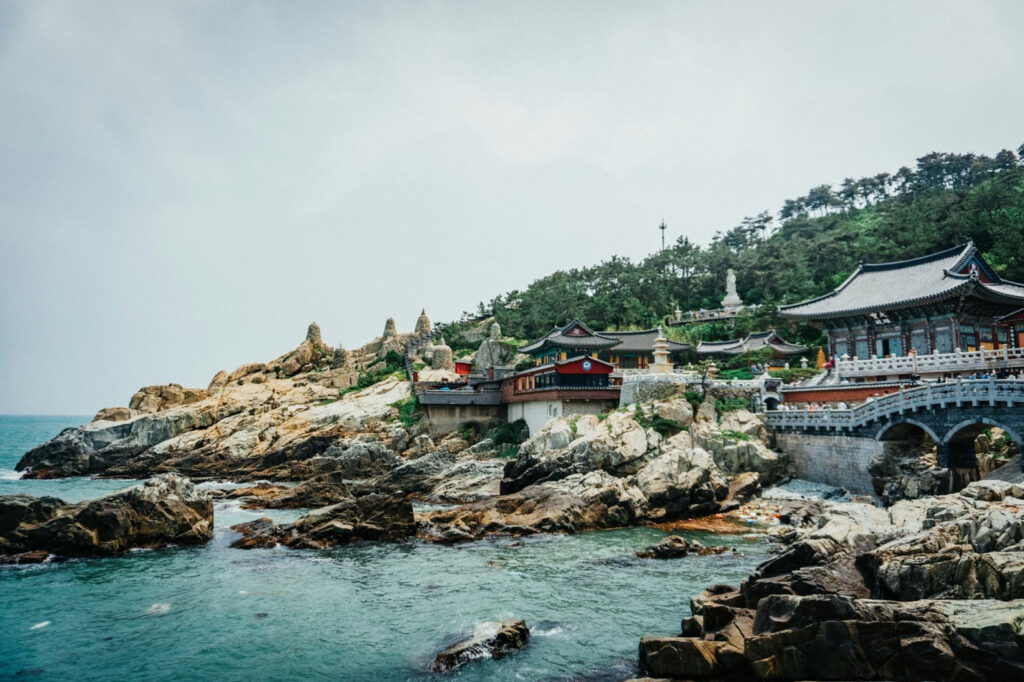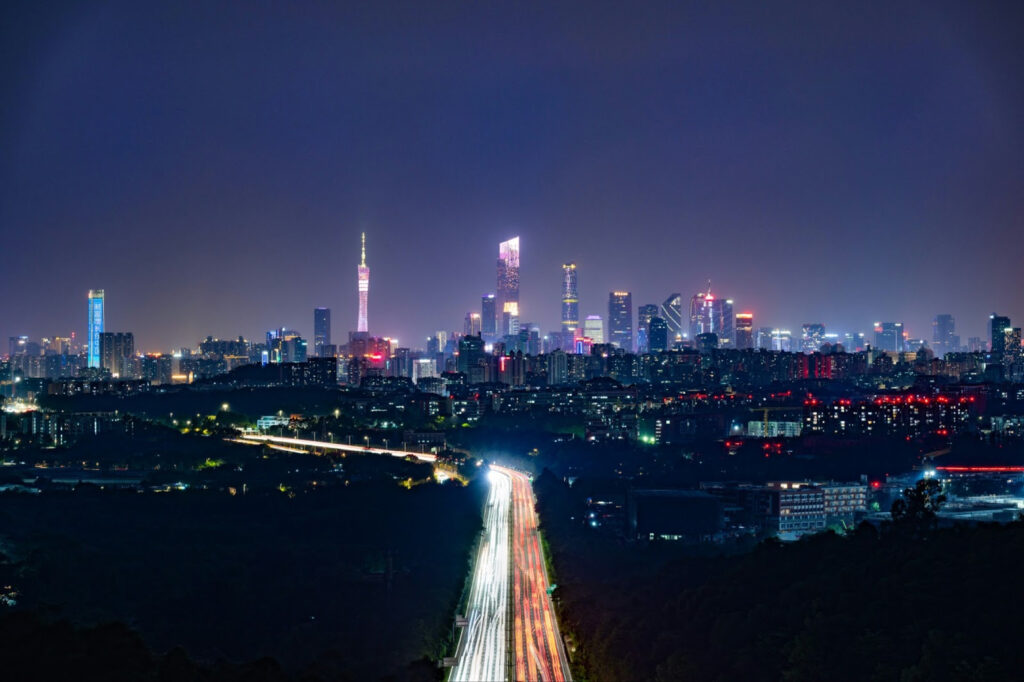Asia rewards curiosity. It’s a continent that dazzles not only with its sights but with its spirit — the way modern skylines stand beside ancient temples, and centuries-old markets hum beneath towers of glass and light. Nowhere is that blend of old and new more vivid than in South Korea and southern China, two regions that reveal how tradition and innovation can coexist with striking grace.
Rhythms of South Korea
South Korea pulses with contrast. It’s a country that celebrates the future without ever letting go of its past. Between the flashing lights of Seoul and the sea-swept calm of Busan lies a journey that captures this balance perfectly.
Travelling from Seoul to Busan by rail offers more than a change of scenery — it’s a window into the country’s soul. The high-speed journey sweeps through rice fields, fishing towns, and mountain tunnels, carrying passengers from the political heart of the nation to its sunlit southern shores in a matter of hours. From the window, the land seems to shift effortlessly between rural quiet and urban rhythm, between centuries-old shrines and clusters of neon signs.
In Seoul, history and modernity share the same streets. At Gyeongbokgung Palace, guards in bright robes march before gates that have stood for centuries, while just beyond, the city hums with cutting-edge technology, art galleries, and bustling cafés. It’s a place of energy — relentless yet refined.
Busan, by contrast, invites a slower pace. The air tastes of salt and roasted corn from the beach stalls at Haeundae, and the hills curve down to meet the water. Fish markets bustle at dawn, while at dusk, the lights of the Gwangan Bridge shimmer across the bay like threads of silver. Together, these two cities tell a story of a nation that honours its roots while leaping boldly into the future.

From Temples to Towers
What makes South Korea remarkable is its ability to shift from ancient to ultramodern in a heartbeat. One moment you’re climbing the stone steps of a Buddhist temple hidden in the forest, the next you’re sipping coffee in a glass tower overlooking the Han River. The country feels alive, constantly reinventing itself, yet its traditions remain quietly unshaken.
Family travellers often find that Korea’s warmth is its greatest treasure. Locals welcome visitors with genuine kindness — offering directions, sharing food, or simply smiling as children marvel at unfamiliar sights. It’s a country that feels both foreign and familiar, where hospitality is not a performance but a way of life.
Across the Waters to China
Heading further south, across the East China Sea, the landscape and rhythm change once again. The energy of southern China hums differently — older, deeper, layered with centuries of culture and trade. It’s a region where the scent of incense mingles with street food, where mountains cradle temples, and where rivers carry the memory of dynasties past.
For many travellers, the Hong Kong to Guangzhou train is the ideal way to begin exploring this corner of Asia. The journey is swift, comfortable, and revealing — a glide through landscapes that shift from Hong Kong’s gleaming towers to Guangdong’s subtropical greenery. Out the window, the view alternates between high-rise skylines and stretches of countryside dotted with small farms and fishing boats.
In just a couple of hours, the train links two cities that tell very different stories of modern China. Hong Kong sparkles with international energy — glass towers rising above Victoria Harbour, trams rattling through old districts, and street markets perfumed with roasted chestnuts and steamed buns. Guangzhou, by contrast, wears its history proudly. One of China’s oldest trading ports, it’s a place where traditional Cantonese architecture sits beside modern bridges and skyscrapers.

The Pulse of Hong Kong
Few cities balance energy and elegance like Hong Kong. From the moment the Star Ferry crosses the harbour, its skyline glitters with confidence. Yet beyond the spectacle lies something softer. Wander through the flower markets of Mong Kok or the narrow alleys of Sheung Wan, and you’ll find fortune tellers, herbalists, and tea houses that have stood for generations.
For families, the city is wonderfully accessible. Its parks are immaculate, its transport effortless, and its food — from delicate dim sum to noodle stalls tucked beneath flyovers — endlessly inviting. Locals greet travellers with a mix of warmth and pride, eager to share the city’s blend of East and West.
When the day begins to fade, Victoria Peak offers the best view of all. From there, Hong Kong stretches out like a sea of stars, the lights flickering against the black of the bay. It’s a sight that humbles even the most seasoned traveller.
Guangzhou: Tradition Meets Tomorrow
Just a short ride away, Guangzhou feels both ancient and new. Once a gateway for the Silk Road’s maritime routes, it remains a city defined by exchange — of goods, of ideas, of cultures. Its old temples, shaded by banyan trees, carry the same serenity they have for centuries. The Six Banyan Trees Temple, with its carved pagoda and curling incense smoke, feels far removed from the pace of the city beyond its gates.
But step outside, and you’ll find a metropolis alive with innovation. The Canton Tower twists towards the clouds like a ribbon of light, and the Pearl River glitters under illuminated bridges. Yet even amidst this modernity, Guangzhou remains a city of food, family, and faith — where elders gather for tai chi at sunrise, and markets come alive with the scent of ginger and roasted duck.
Cultures in Conversation
Travelling between Korea and southern China offers a rare glimpse into how two great civilisations evolved side by side. Their languages, foods, and festivals differ, yet there’s a shared sense of continuity — a deep respect for heritage paired with an appetite for progress.
In both places, tradition isn’t locked behind museum glass. It’s lived — in a grandmother’s recipe, a temple bell, a festival dance, or a child’s first bow to their elders. These aren’t relics of the past, but living expressions of identity.
Connections Beyond Borders
The great gift of modern travel is how easily we can move between worlds. High-speed trains and efficient networks make it possible to cross hundreds of miles in a few hours, yet what stays with you isn’t the speed — it’s the stillness between moments. The way the countryside flashes past, the sound of a vendor calling at a station, or the sight of a grandmother and child sharing snacks as mountains blur beyond the window.
Whether it’s the sleek design of a Korean bullet train or the calm efficiency of China’s railways, the experience feels effortless, yet deeply meaningful. The journeys link more than cities; they link people, ideas, and generations.
A Journey to Remember
From Seoul’s futuristic glow to Guangzhou’s lantern-lit alleys, the route through these corners of Asia is one of contrast and connection. It’s a reminder that while technology has made travel faster, the essence of discovery remains unchanged — to look, to listen, to understand.
For families and solo explorers alike, this is travel that leaves a mark. The sound of temple bells in the morning, the scent of sea air at dusk, the quiet moments shared with strangers on a train — these are the memories that last.
Between Korea’s dynamic cities and China’s cultural heartlands lies not just a journey across borders, but a story of how the old and the new can coexist beautifully. And perhaps that’s what makes this route so unforgettable: it doesn’t just connect destinations — it connects the soul.


